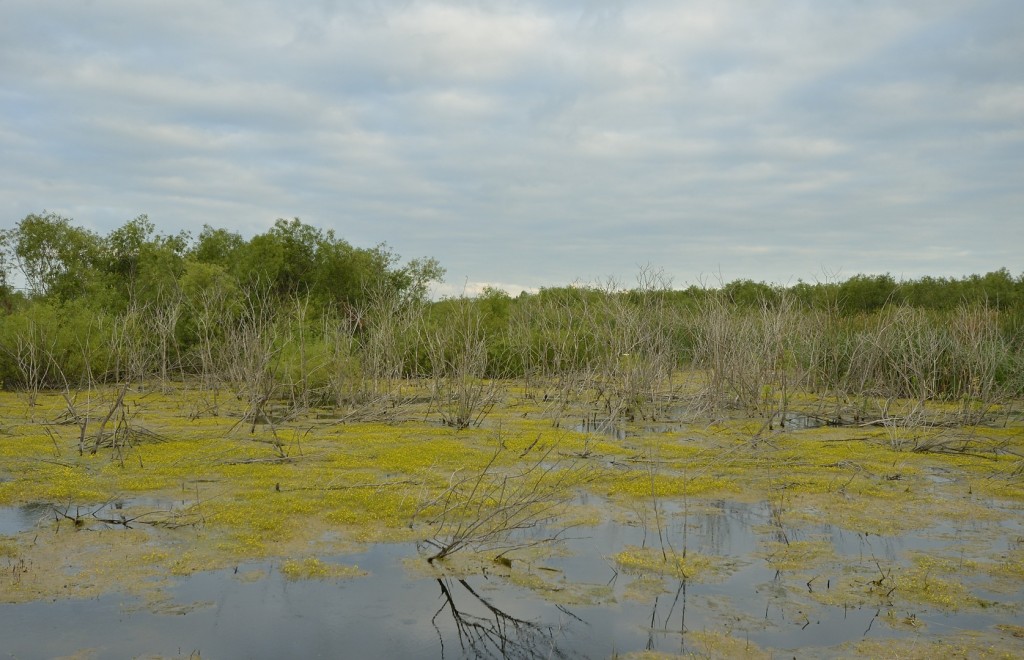
The yellow flowers blanketing this pool are bladderworts, Utricularia sp., a carnivorous plant. I’ve never seen a concentration of bladderwort like this.
May 18, 2015
All images are linked to larger versions.
I couldn’t help myself. I visited the new wildlife drive at Lake Apopka Restoration Area again yesterday, and though the light was miserable for photography for the first couple of hours, the wildlife was there. Here are some of my favorite shots from the morning.
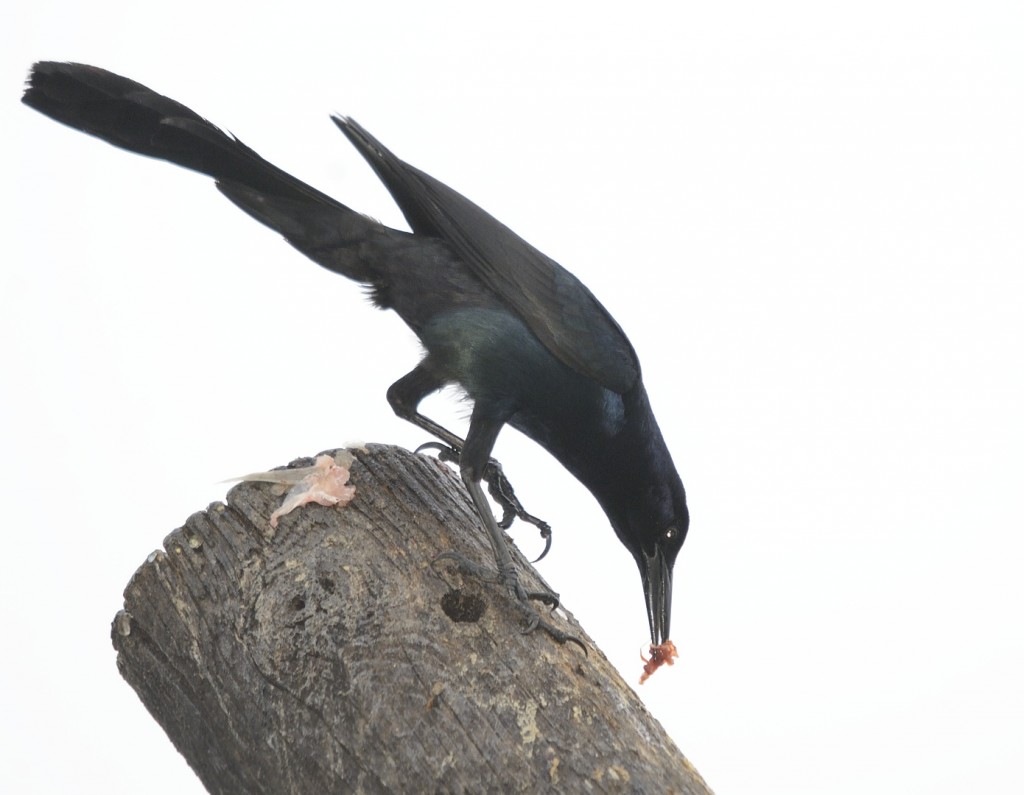
Why? Eventually the osprey moved on, and the grackle took top spot and cleaned up on the fish scraps.
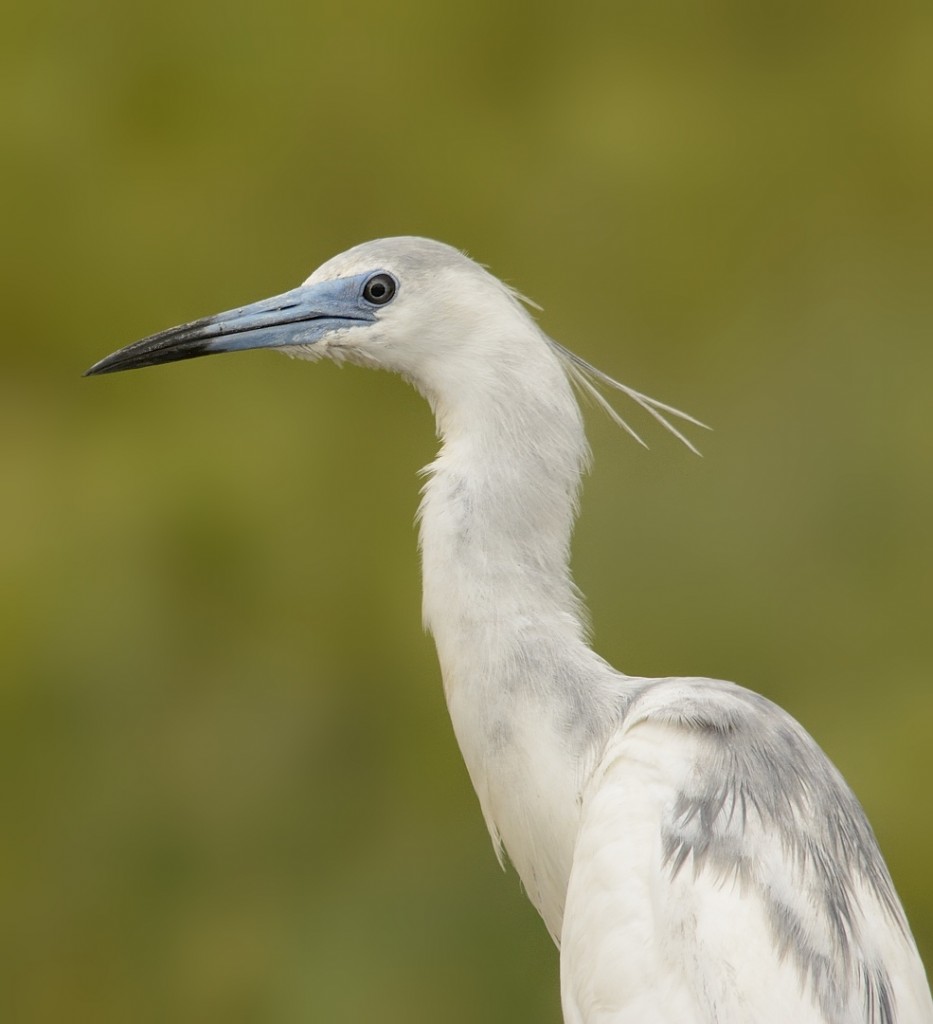
A juvenile little blue heron showing high breeding colors in the cere and base of the bill. Yearling birds in juvenile plumage will sometimes breed in this species.
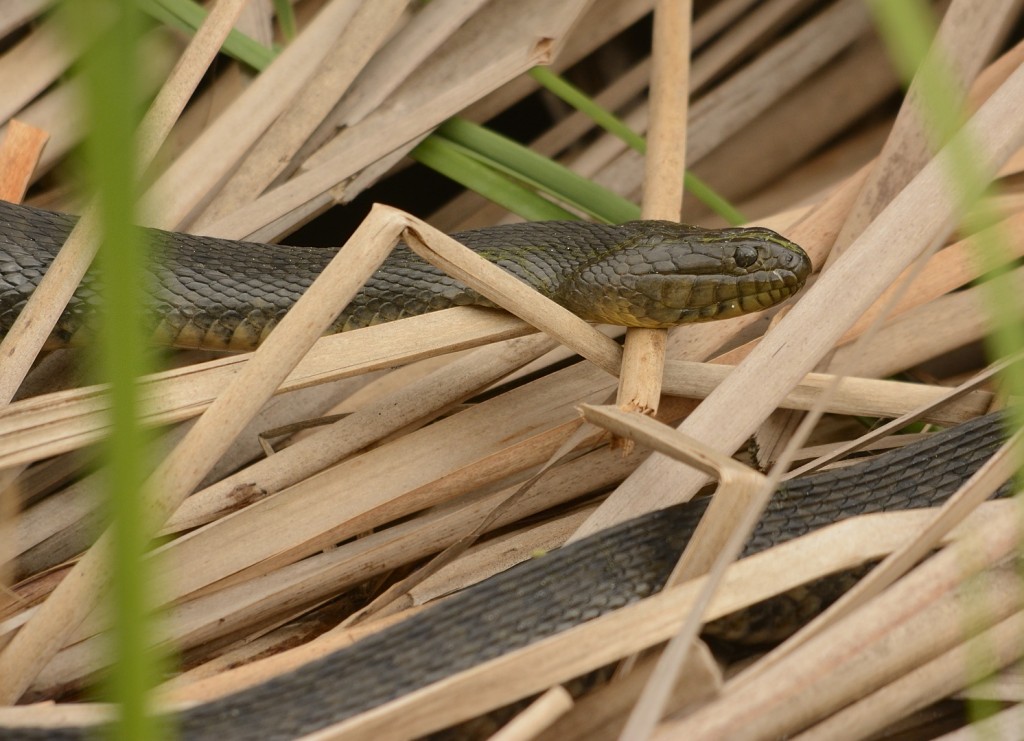
Not a bad day for herps. This Florida green watersnake (Nerodia floridana) was basking in the dead cattails as the sun struggled to make an appearance.
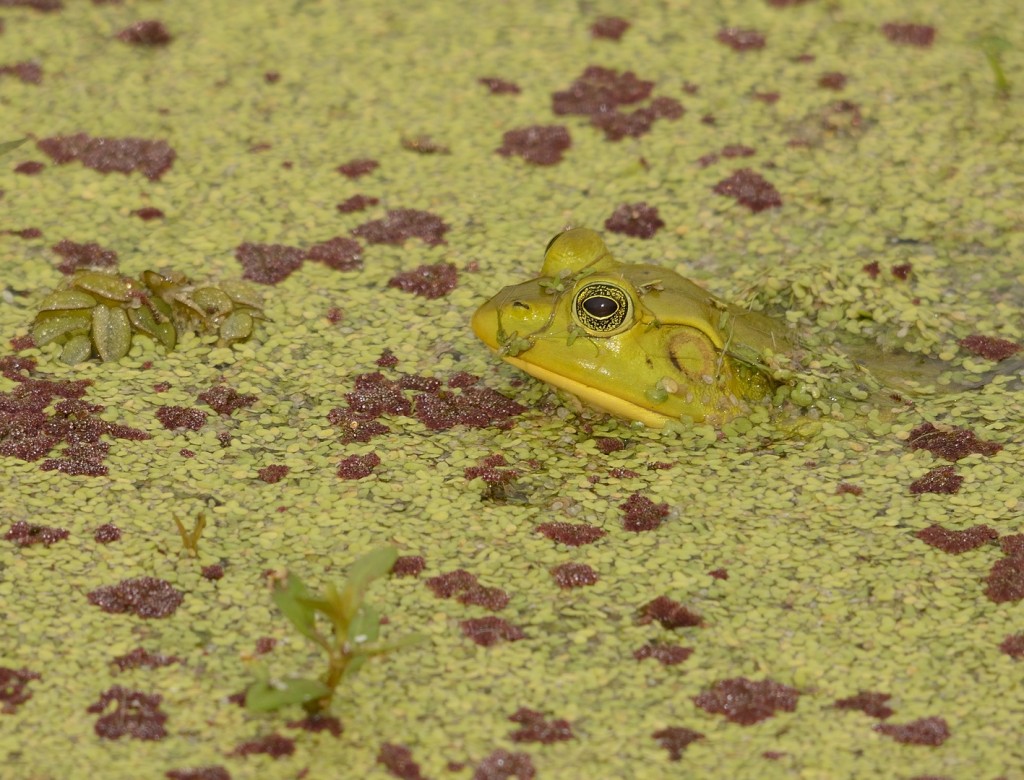
Pig frog (Lithobates grylio) surrounded by several floating aquatic plants, including Lemna sp., (duckweed), Salvinia minima (water spangles), and Azolla filiculoides (American waterfern; not a fern).
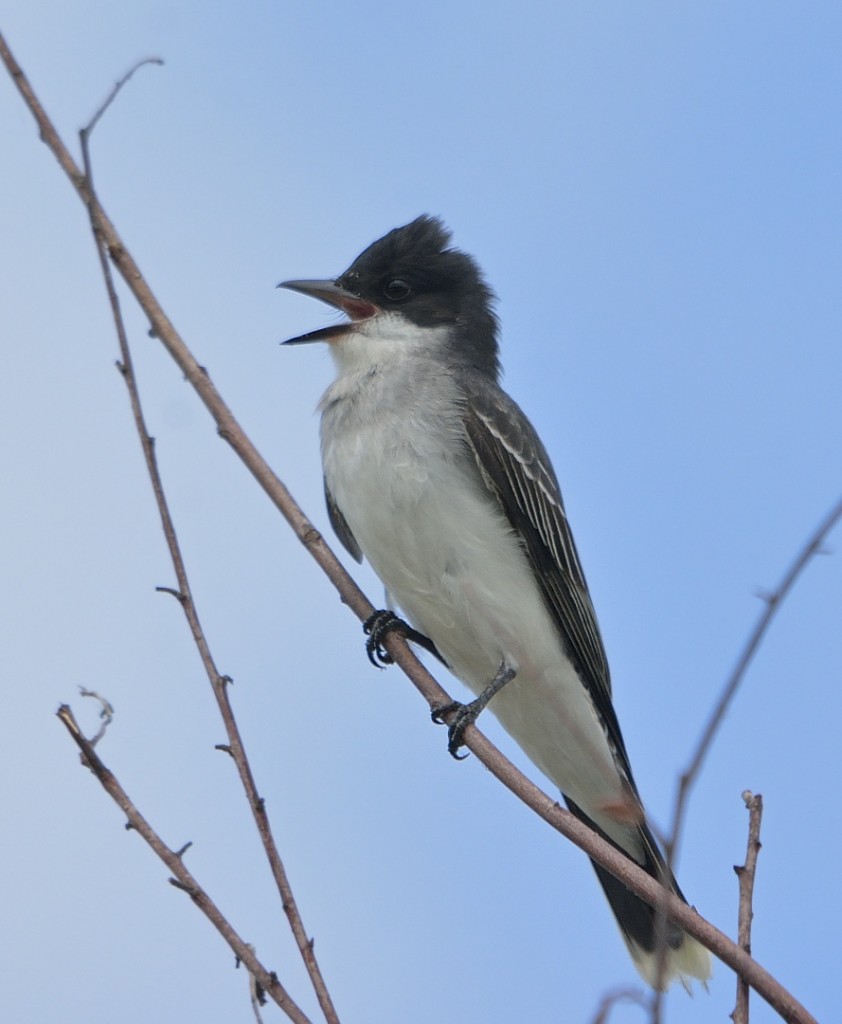
Eastern kingbird. I don’t see this species often in central Florida except as a migrant in passage. This bird is probably a breeder.
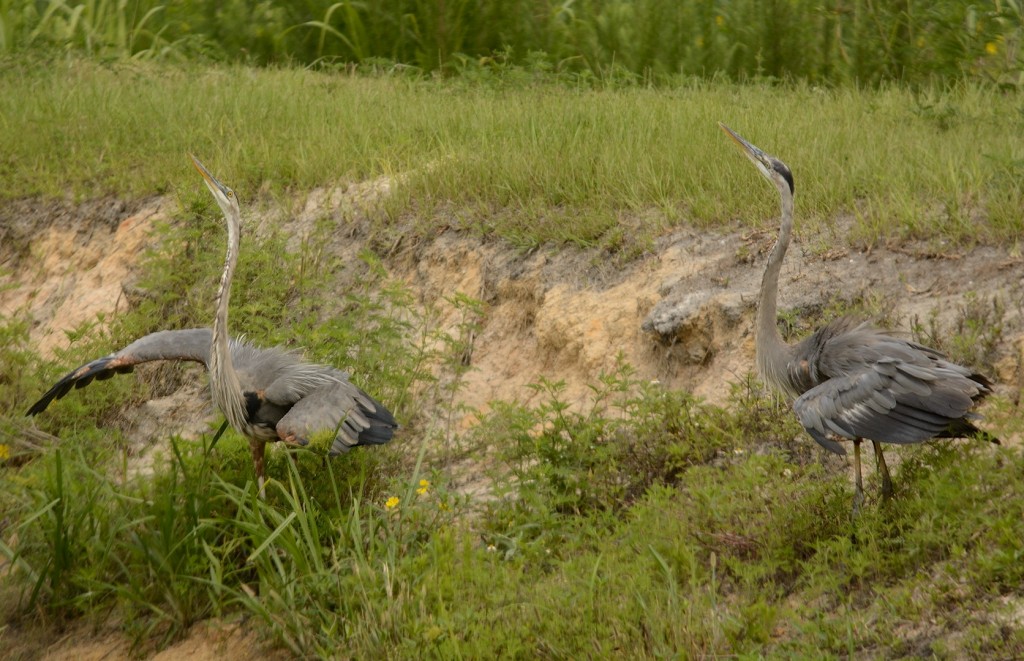
These two great blue herons were arguing over territorial rights, using the head up-wing droop posture that says get the hell out of my space.
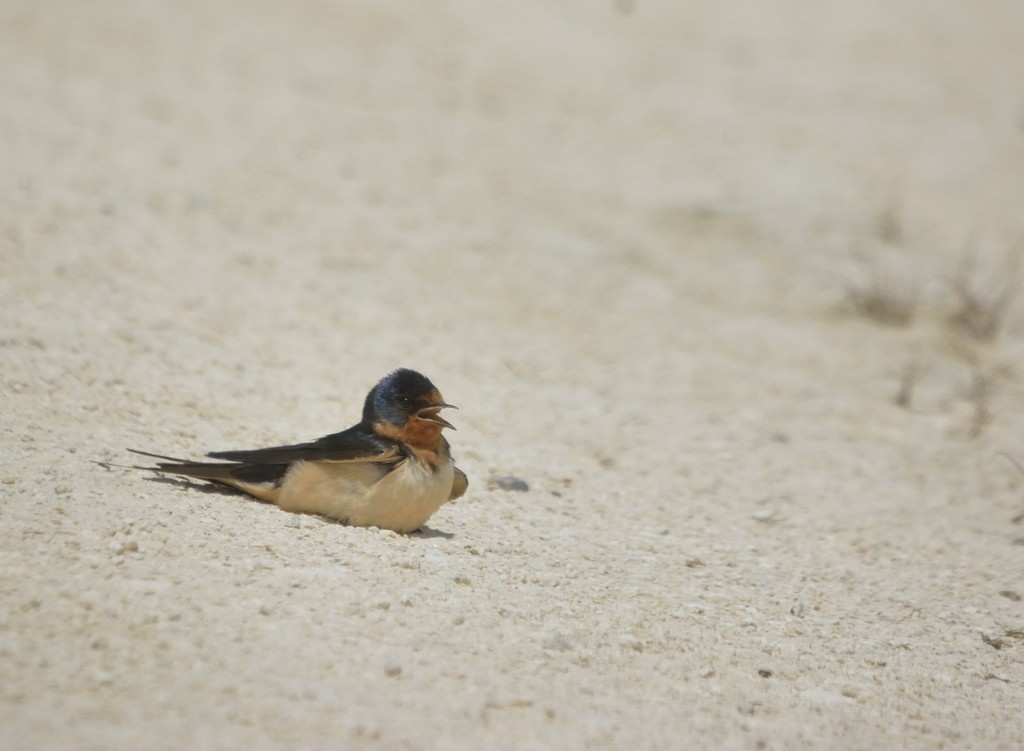
By mid-day, it was getting quite toasty. Barn swallows were basking on the hot shell rock roads, overheating to the point that they were panting to cool down. Why? Probably to kill ectoparasites with the heat load.
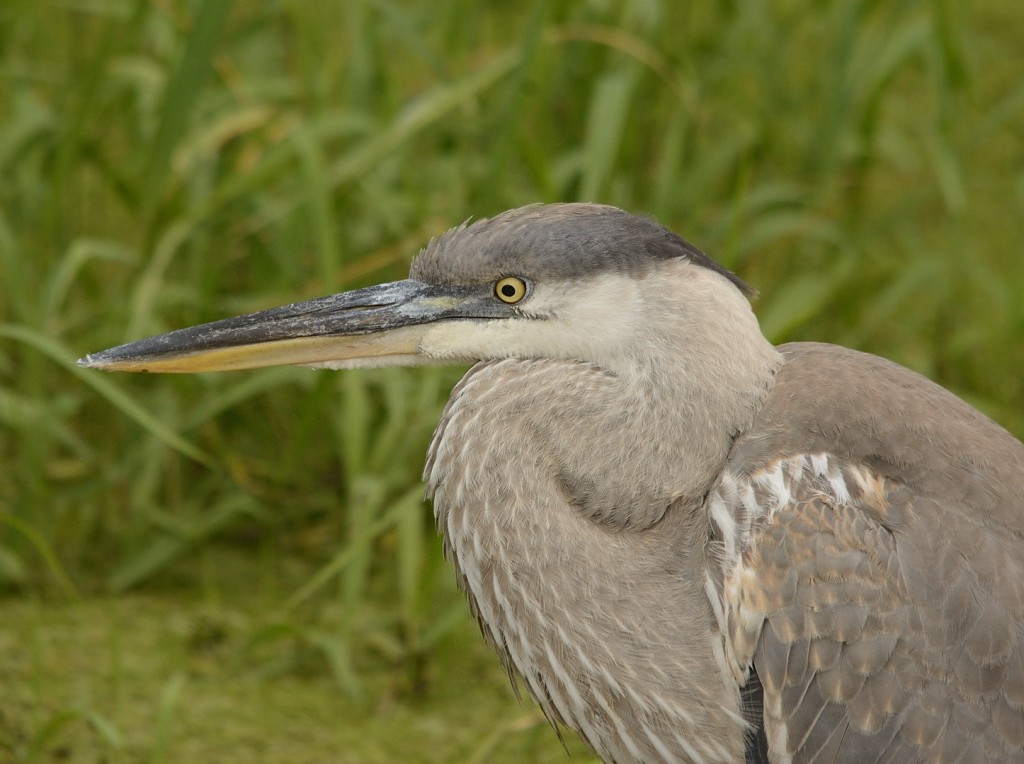
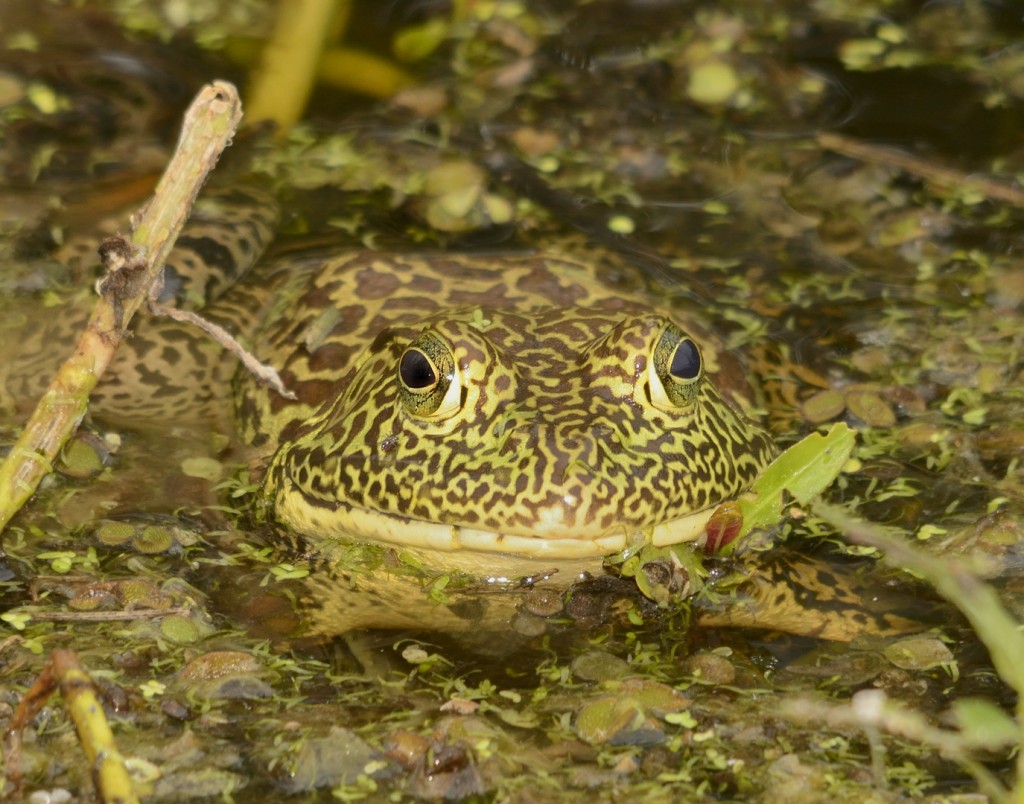
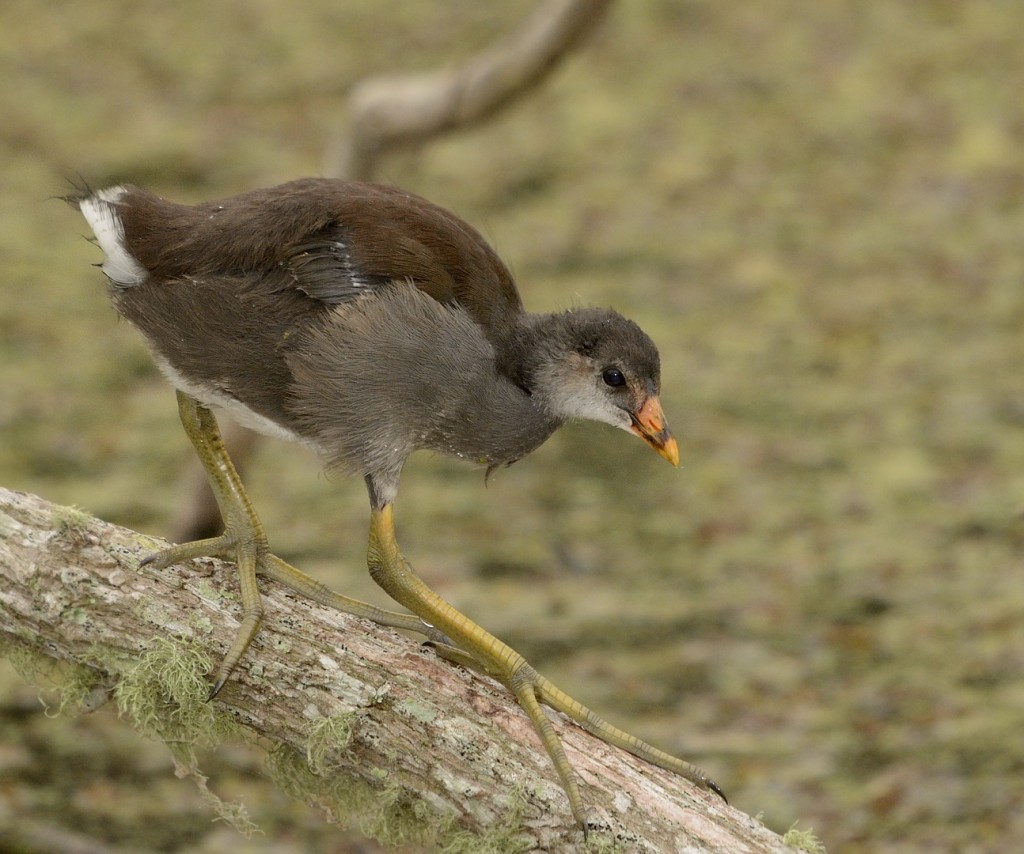
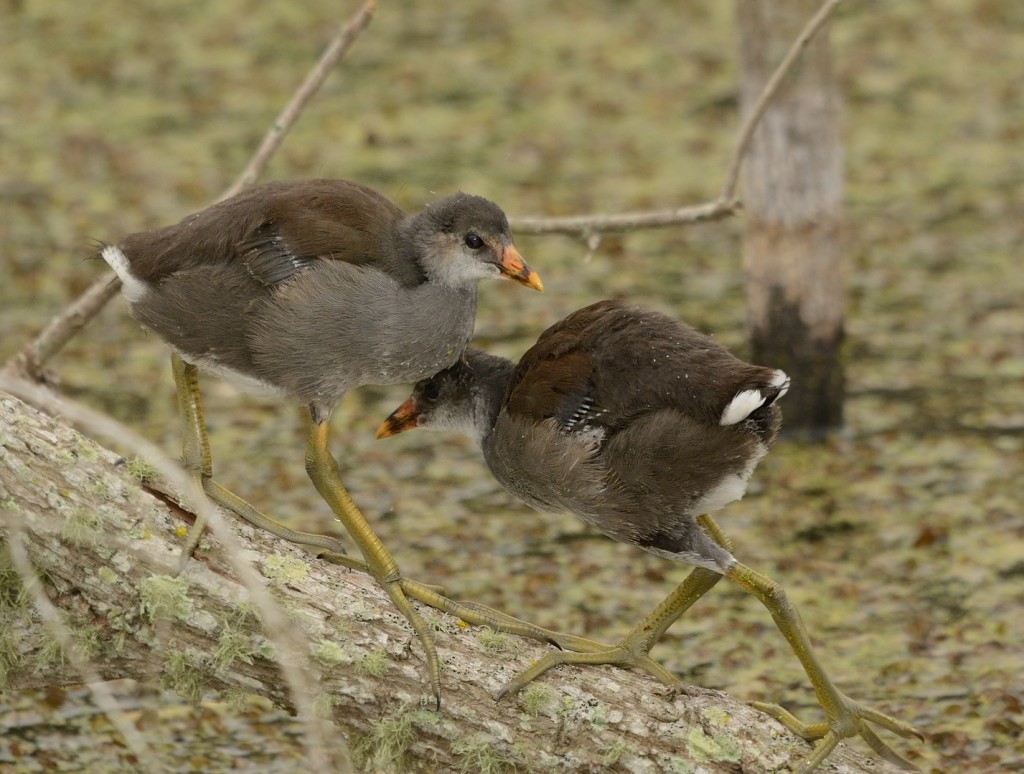
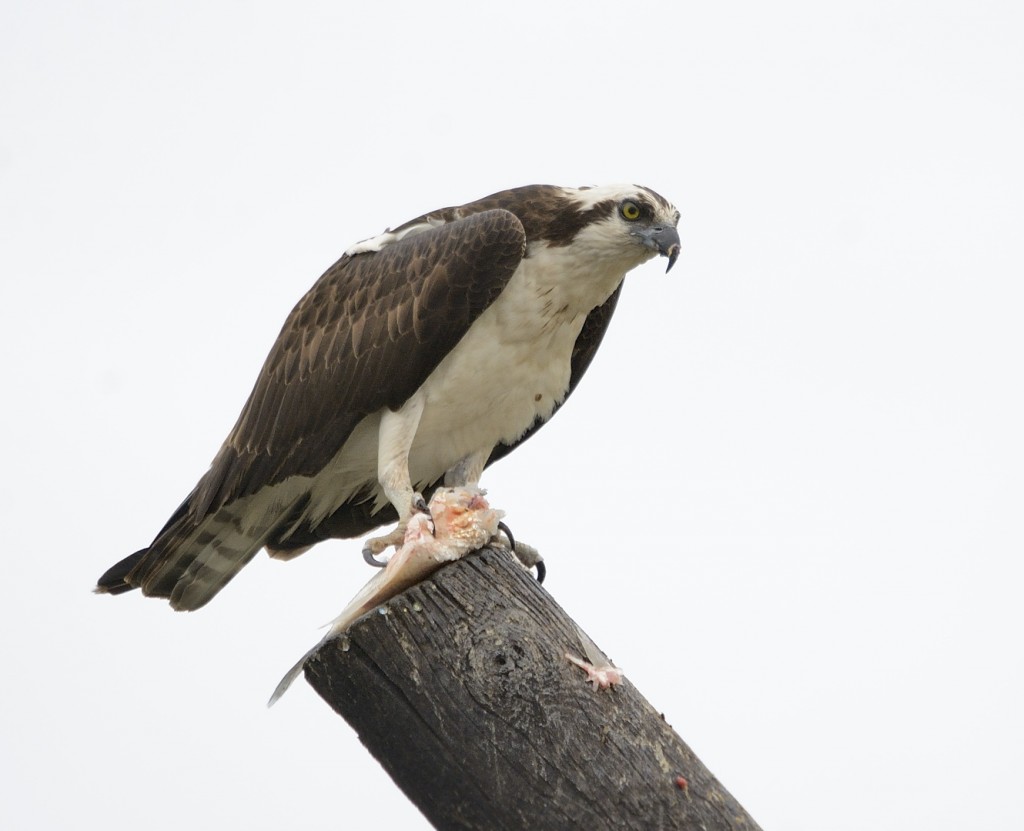
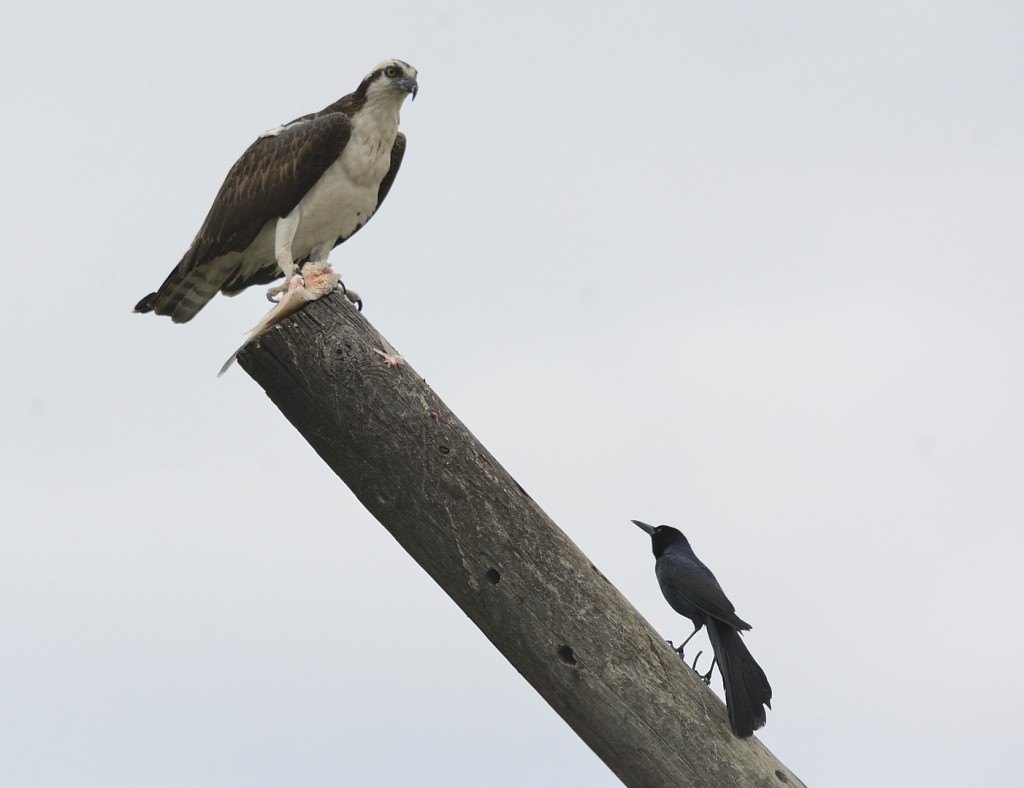
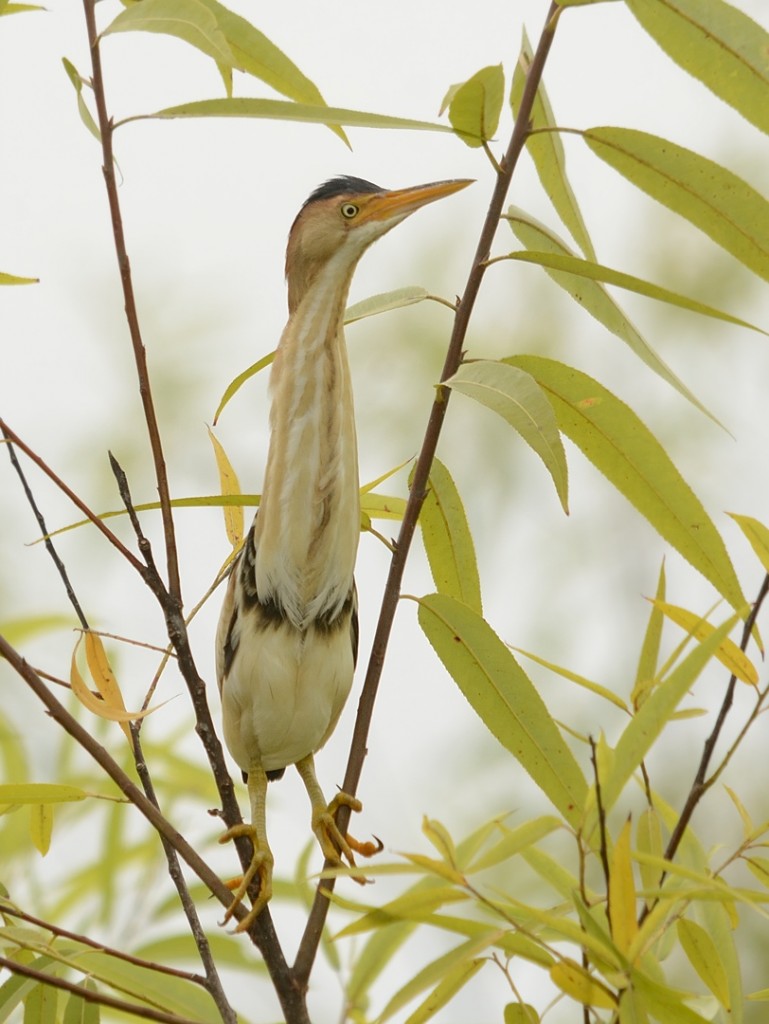
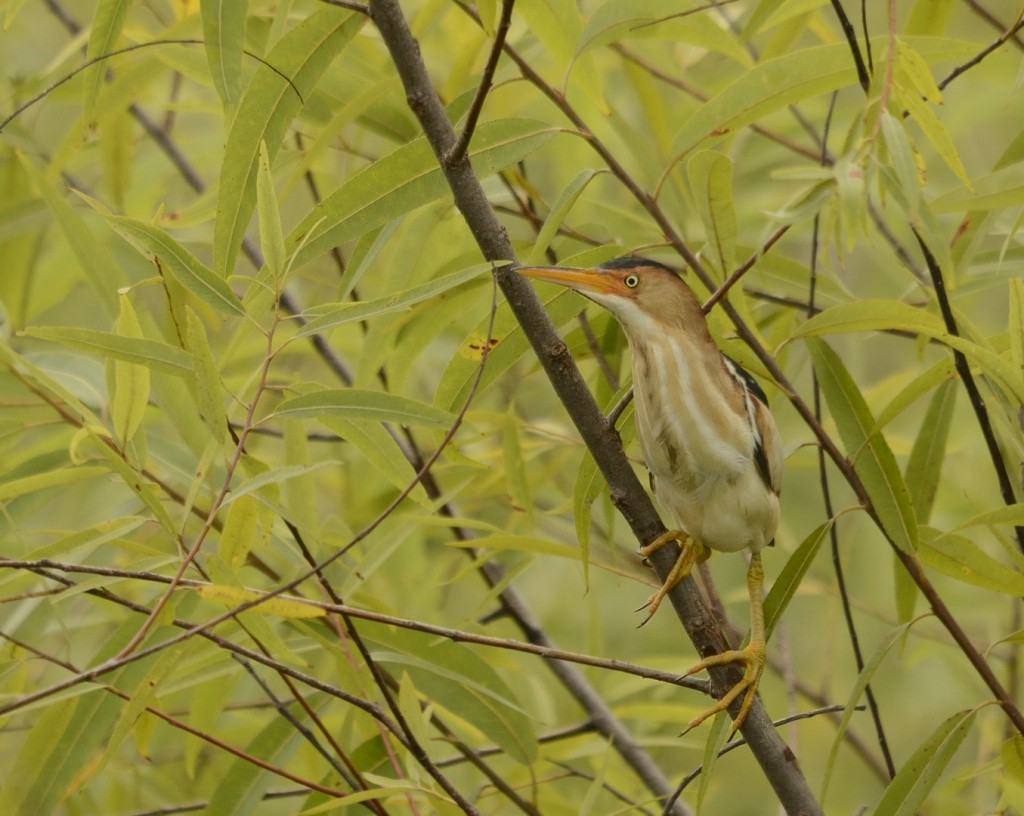
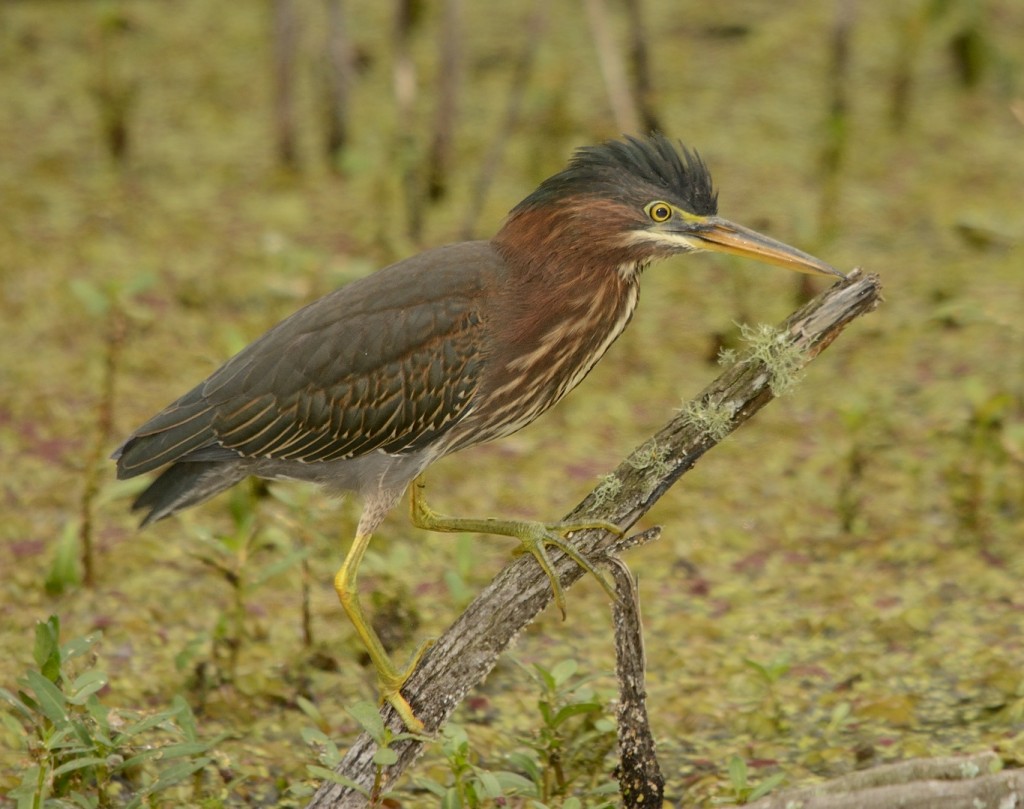
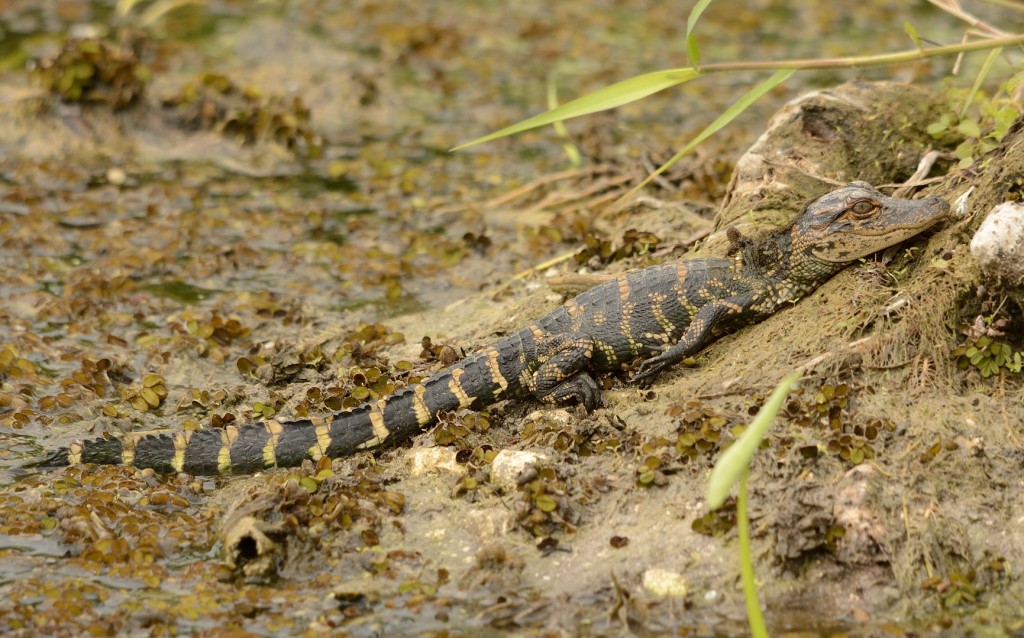
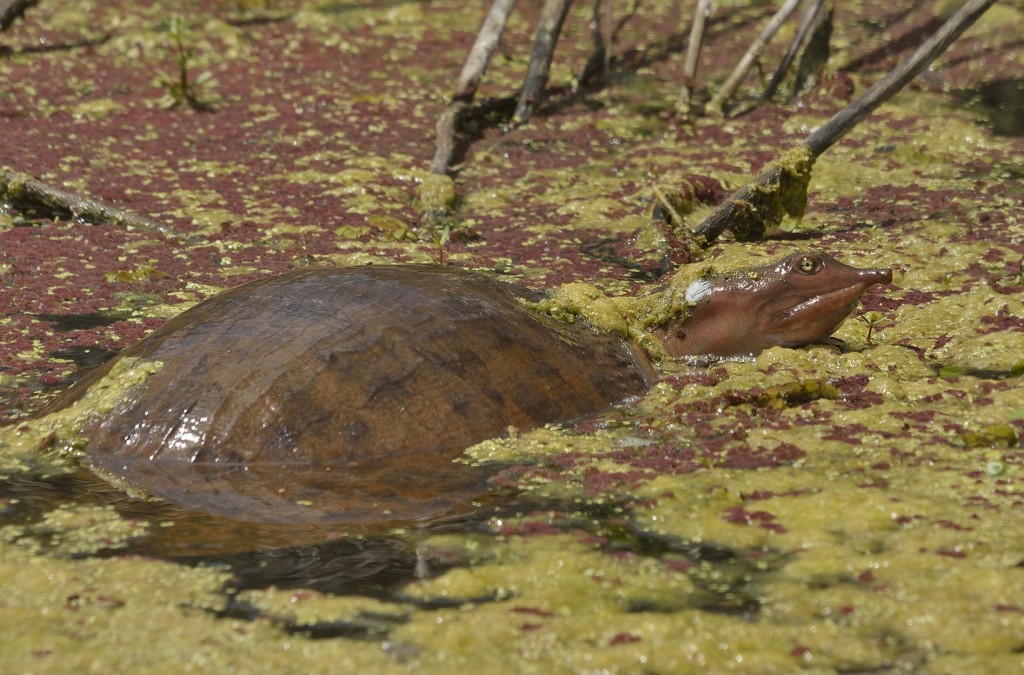
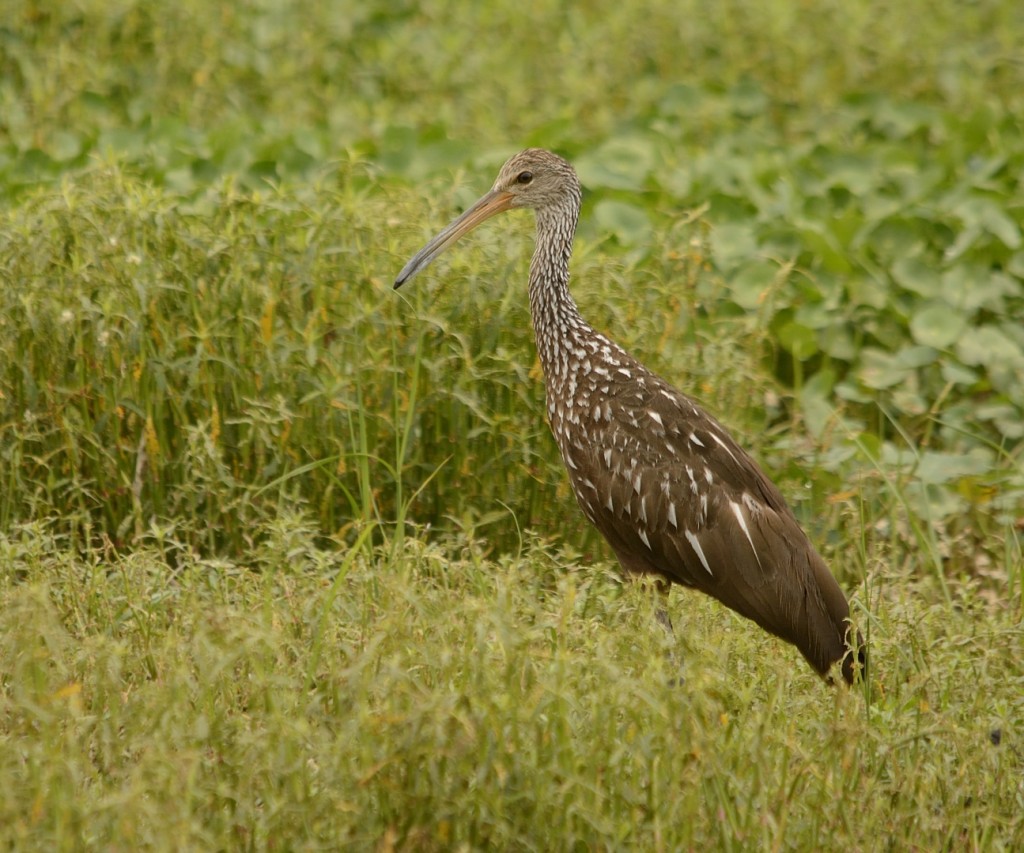
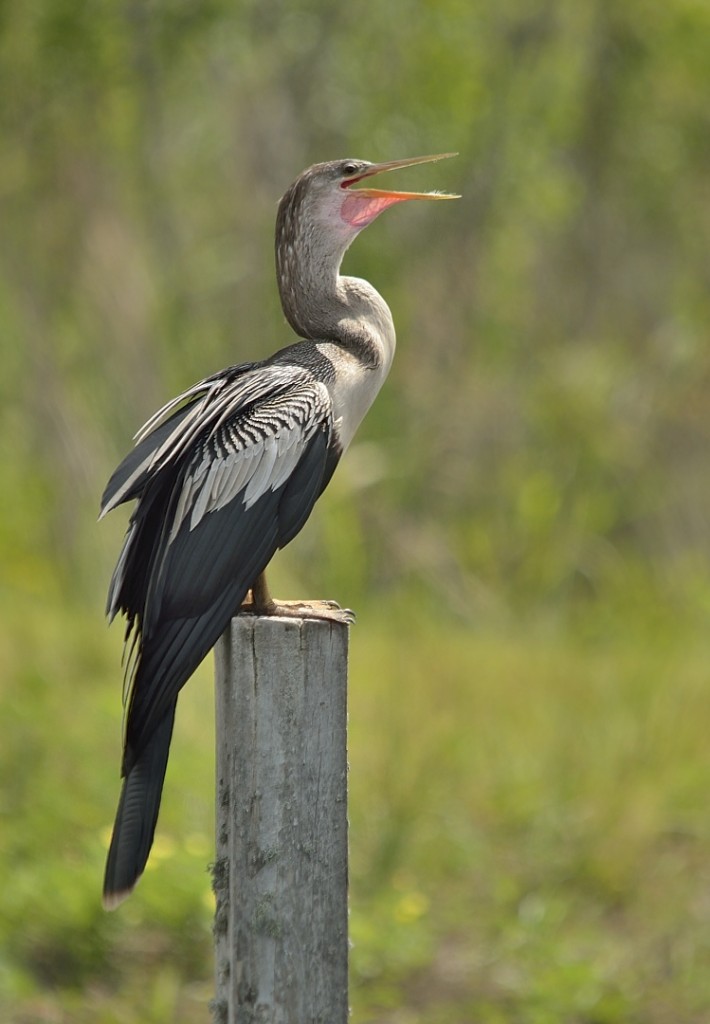
Well, we knew the place is addictive, so it’s not surprising you returned so soon.
Wonderful post although I’m quite jealous of your photos of the Least Bittern and Eastern Kingbird. Not to mention the snake. We could hear the bitterns the other day but couldn’t spot one.
Even with the temps warming up, there will always be a good excuse …. reason …. to get over there and enjoy the day.
Thanks, Wally. I plan on visiting regularly throughout the year. Least bitterns have always been tough birds for me to photograph. This was the best photo op I’ve had with them in a long time.